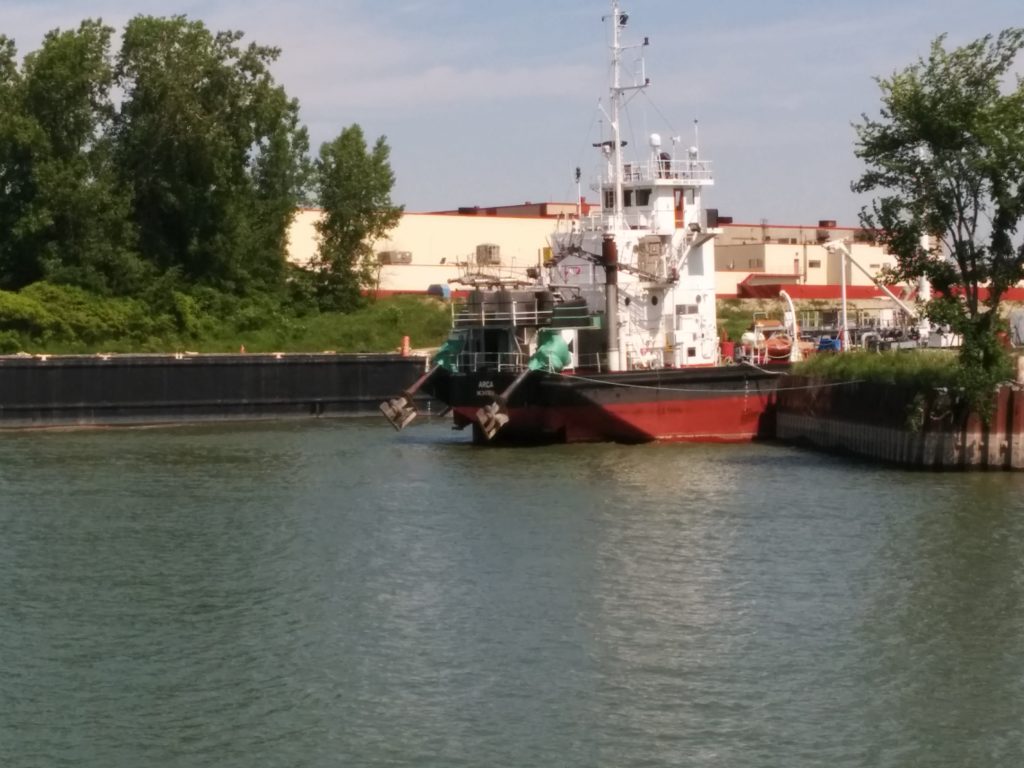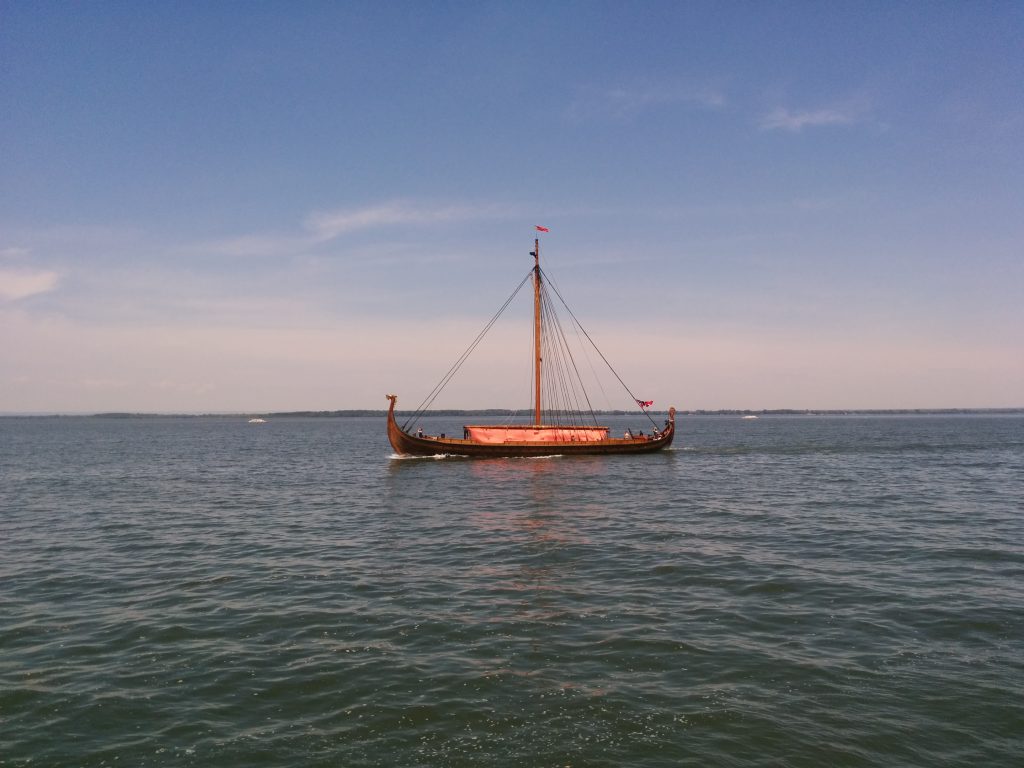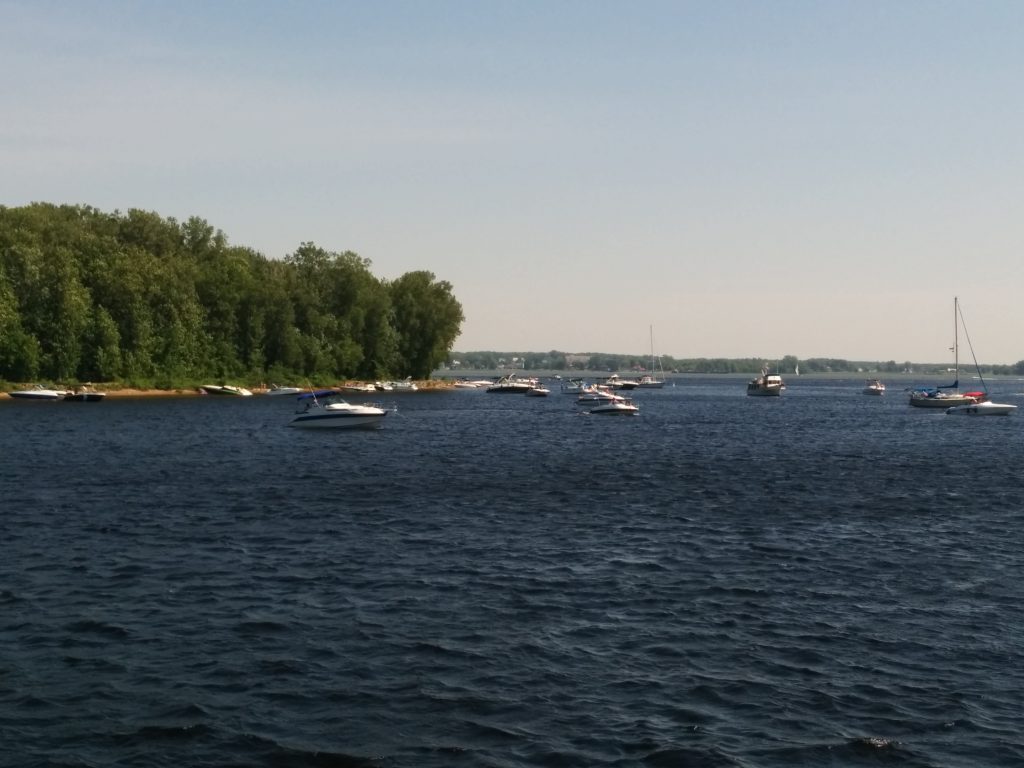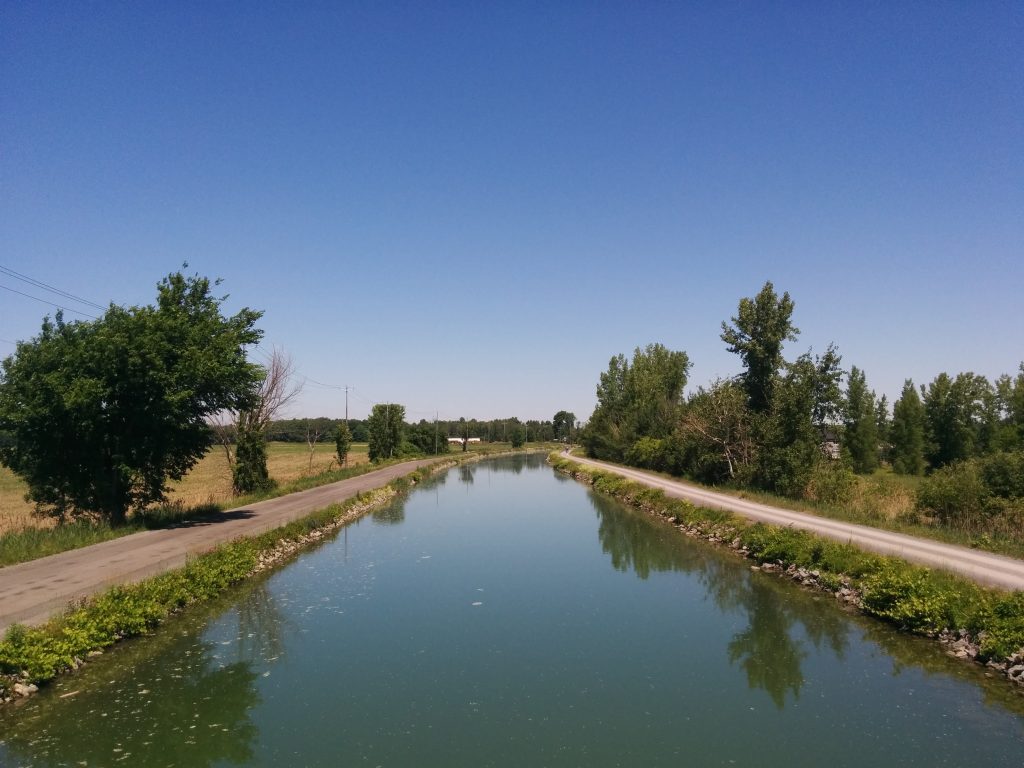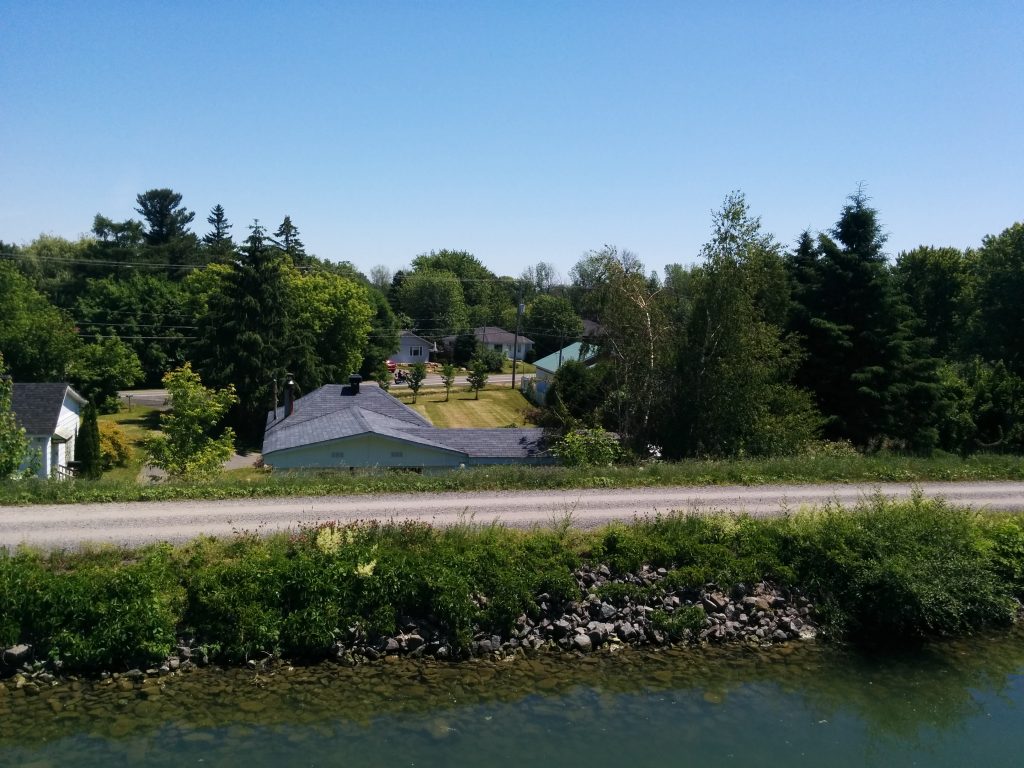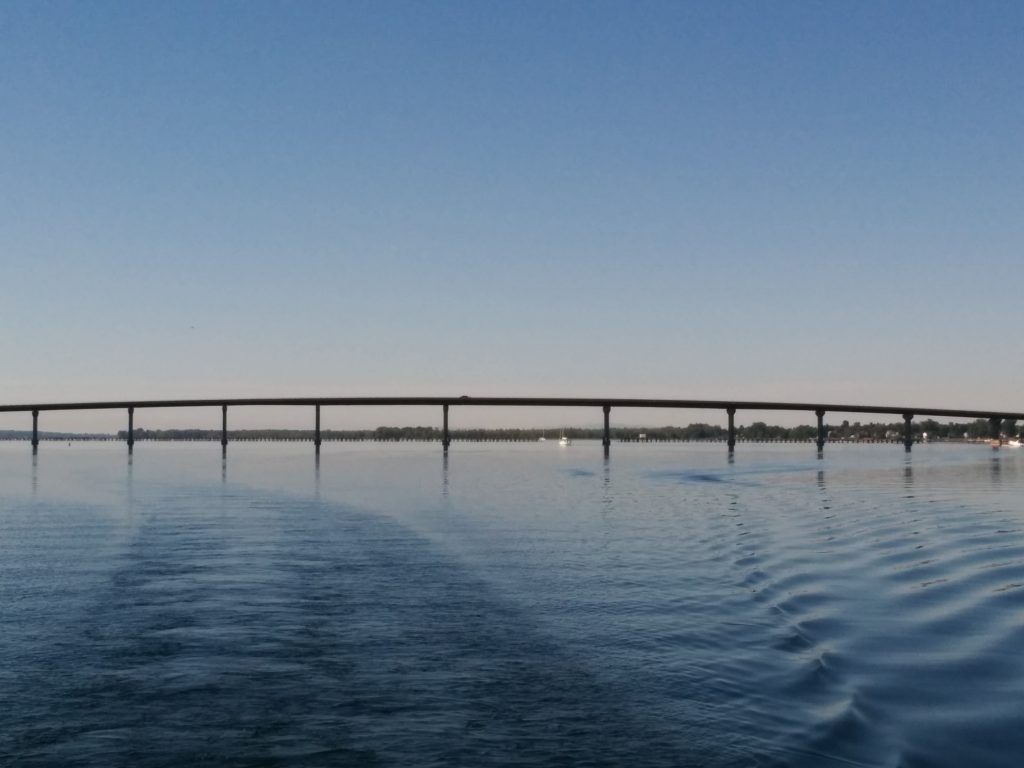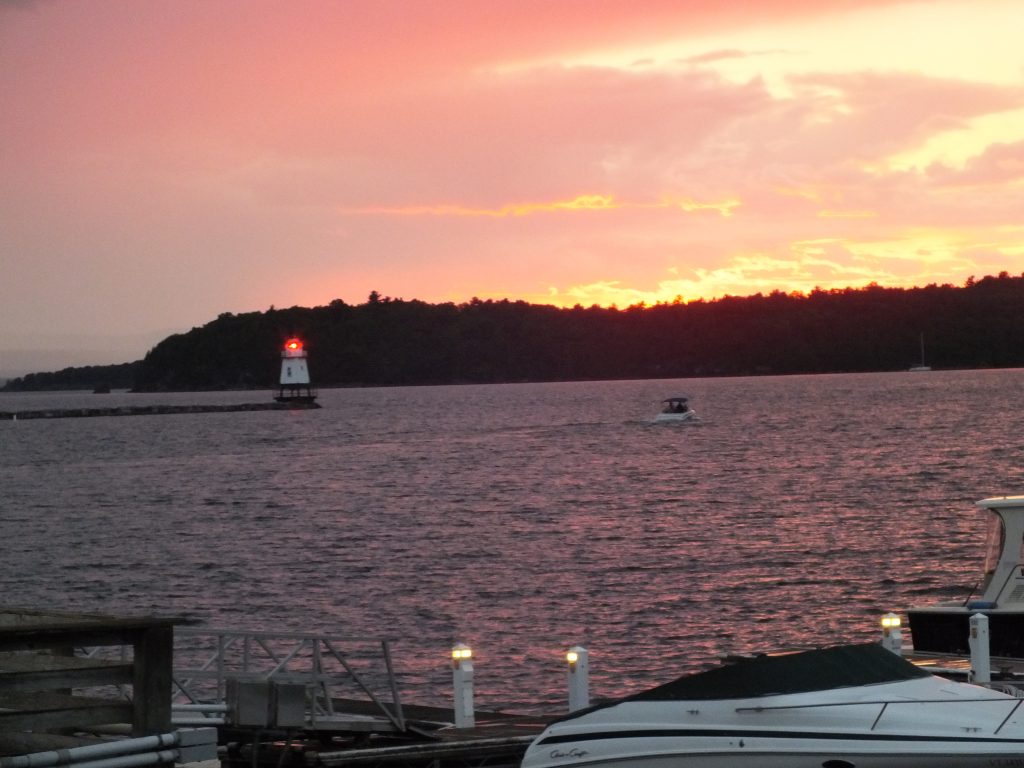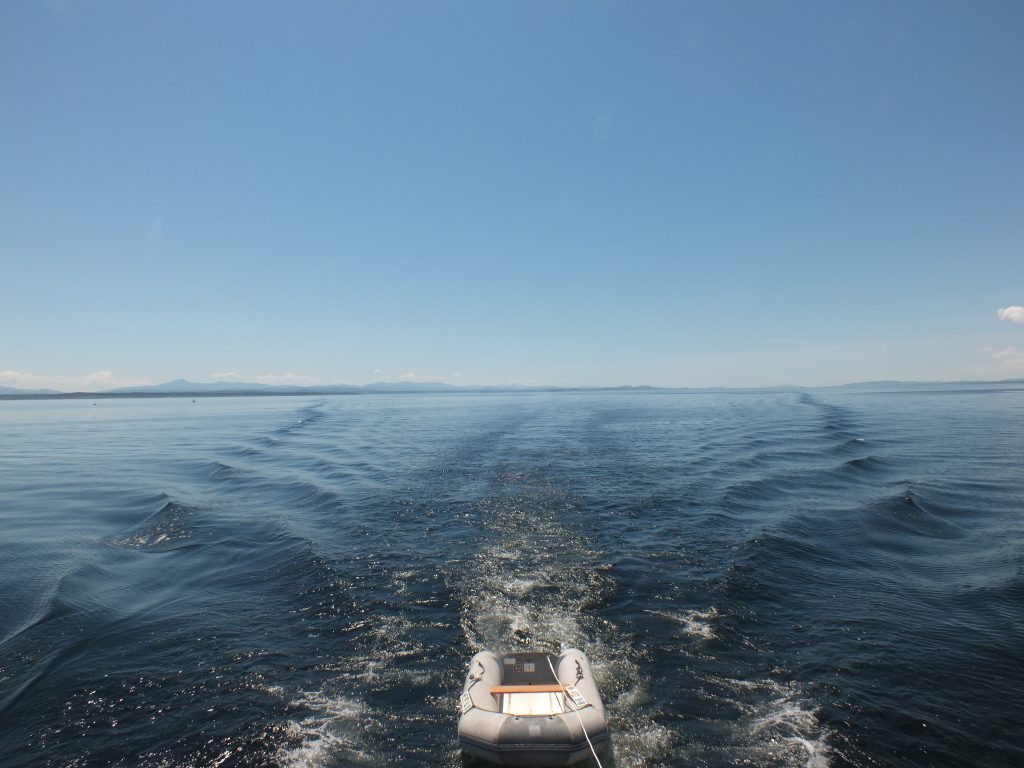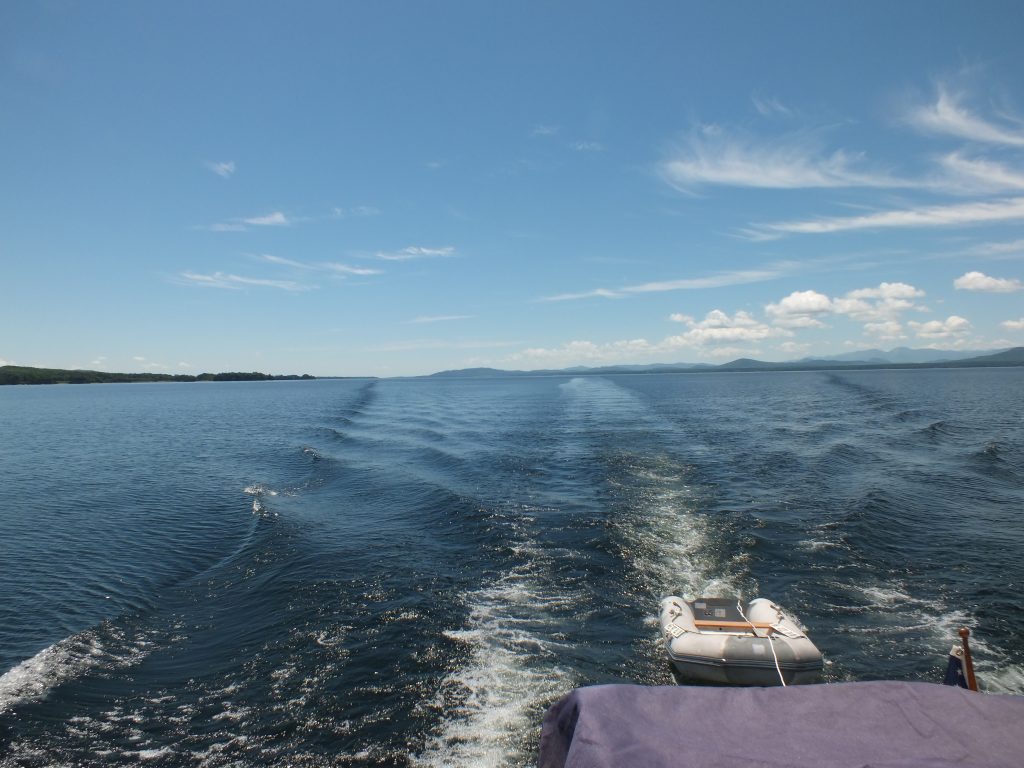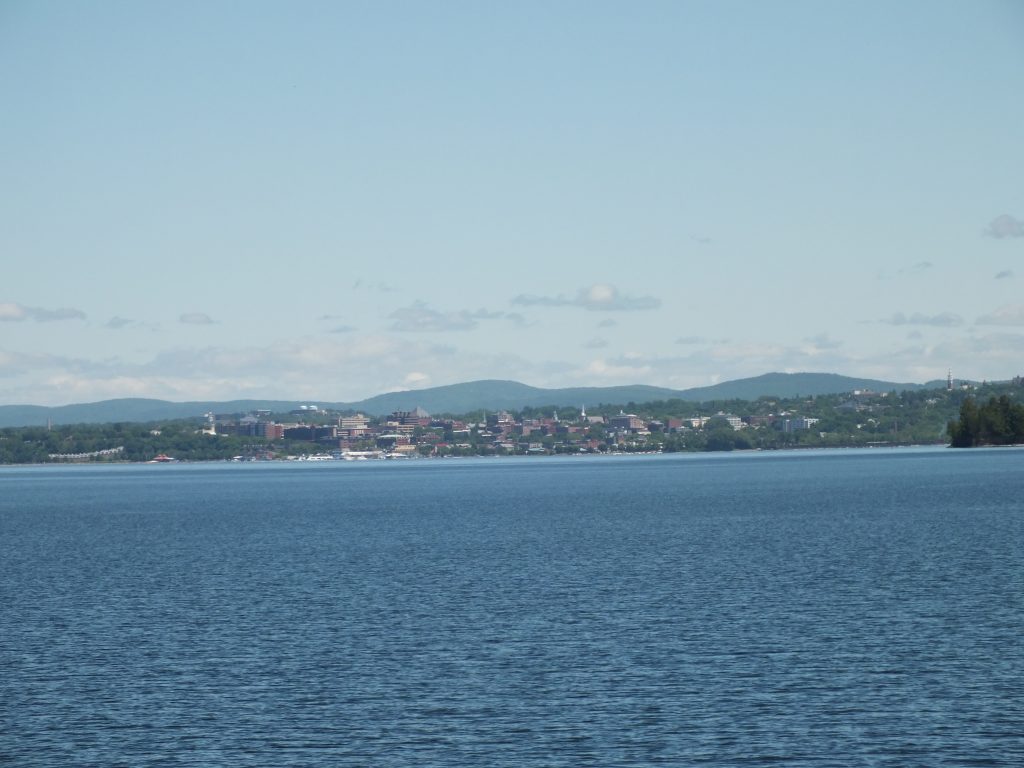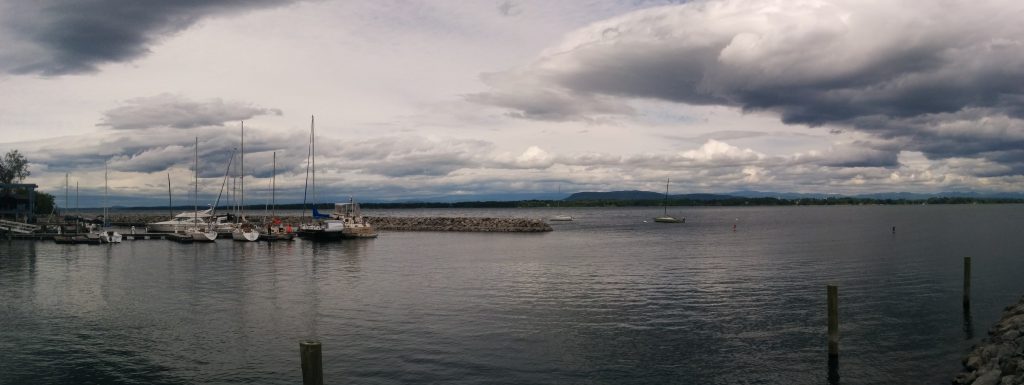Monday, June 20th
For the first time since Troy, NY, we really felt the effect of the tides today. The St. Lawrence is a large and fast-flowing river, especially in the narrow sections. But below Trois-Rivières, the effects of the tides can also be felt. On this stretch of river, the flow downriver is interrupted by a reverse flow for a couple of hours each tide cycle, caused by the high tide downstream.
These currents can be swift, and can be a serious problem for a slow boat if not timed correctly. There are tide tables and current atlases that can be used to estimate the exact direction (set) and speed (drift) of the current in any one-hour window at any spot on the chart. Then you can factor in your boats normal speed and calculate when is the best time to leave so you have the largest possible fair (favorable) current for most of the trip.
Fortunately, one of our guide books did all the math for us, and all we had to do was pick our starting point, destination and boat speed, then read from a table when to leave. Today it was 8 hours before low tide in Quebec City, which was at 2:16 PM. That meant getting underway at 6:15 AM. Ouch.
But the calculation was correct, and we made the 67-mile leg from Trois-Rivières to Quebec City almost exactly on time. We typically travel at an economical speed of 7.5 knots. With the engines set for that speed, our actual speed over ground (SOG) at one point was showing over 13 knots.

Our destination was the Port of Quebec Marina in Quebec City. It’s right downtown below the old, walled city.
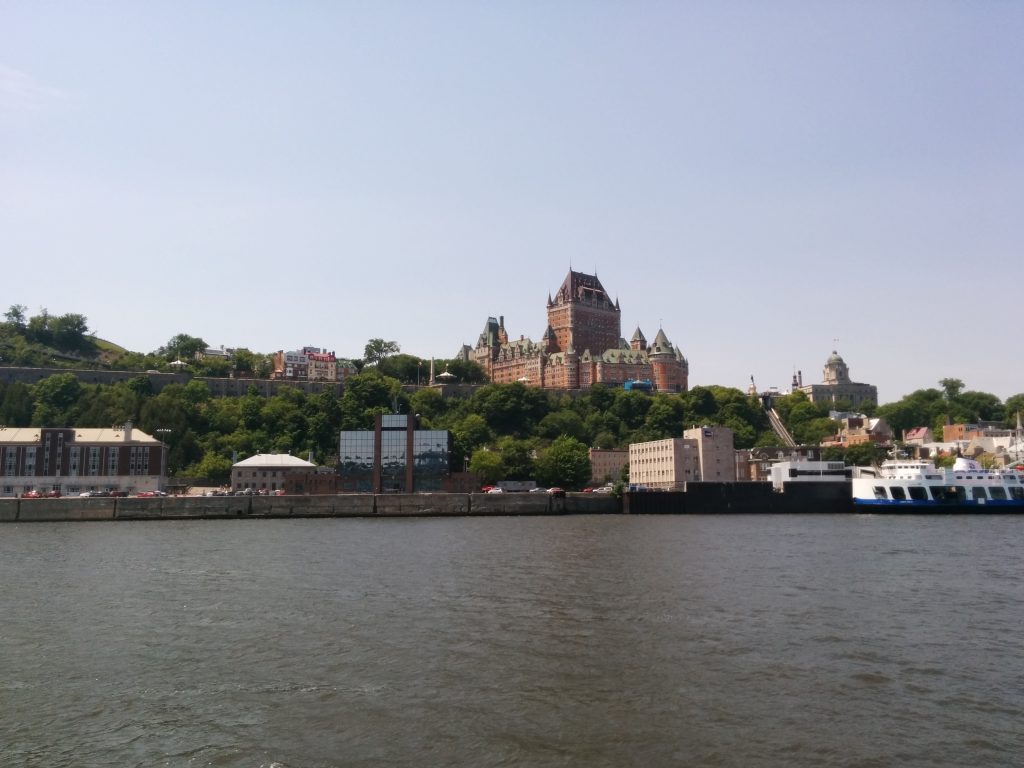
The marina is enormous. It has its own lock at the entrance to keep the marina at a constant level, rather than rise and fall with the 15-foot tides.
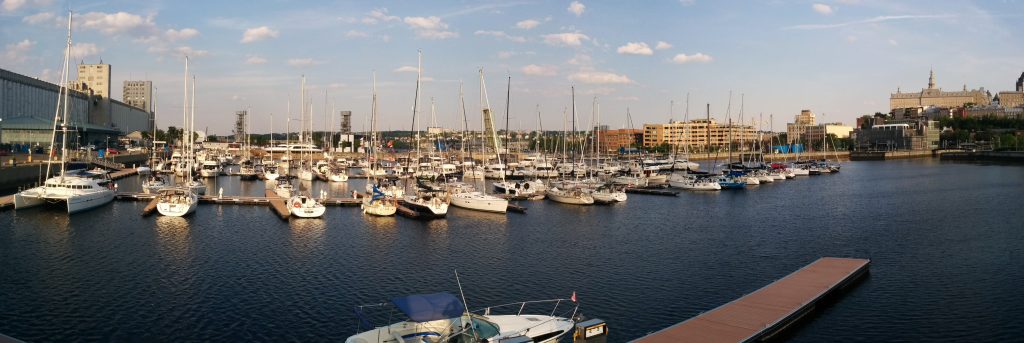
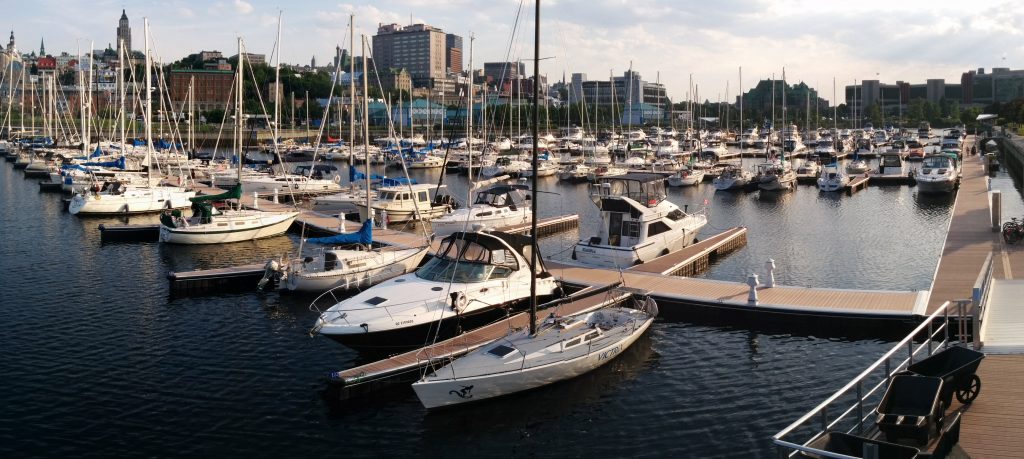
Entering the lock and then, entering the tight slip at the far end of the marina and down a long fairway, was complicated by a 22-knot Southwest wind with gusts to 32 knots. This would be a challenge for most boats, but Cygnus is especially affected by wind. It seemed the whole marina turned out to watch me attempt this feat. Fortunately there was a competent dock hand and another friendly boater ready to take lines from my own highly-trained crew, and we made a perfect landing (on the third try) without hitting any other boats. The crowd cheered.
The plan is to recuperate here in Quebec City for two or three days before we hit the most challenging and remote portions of the trip.
- Miles traveled: 760.3
- Engine Hours: 115.9
